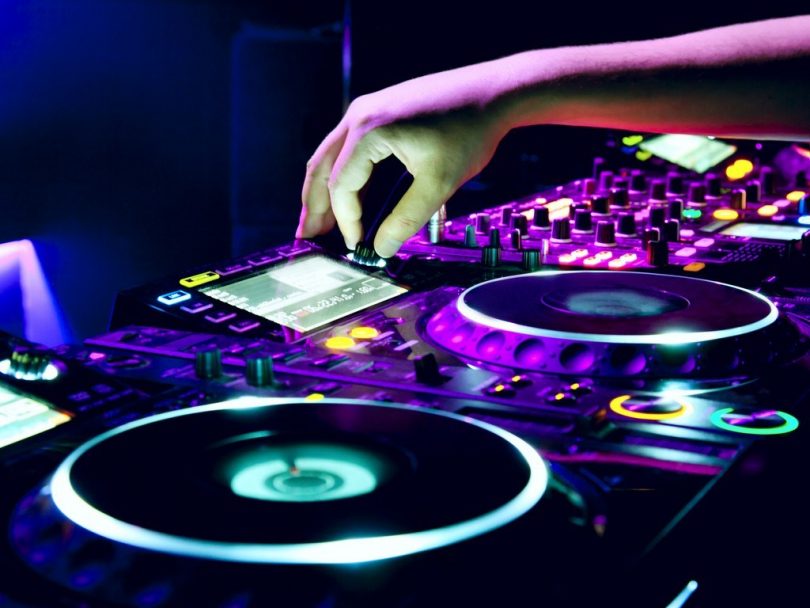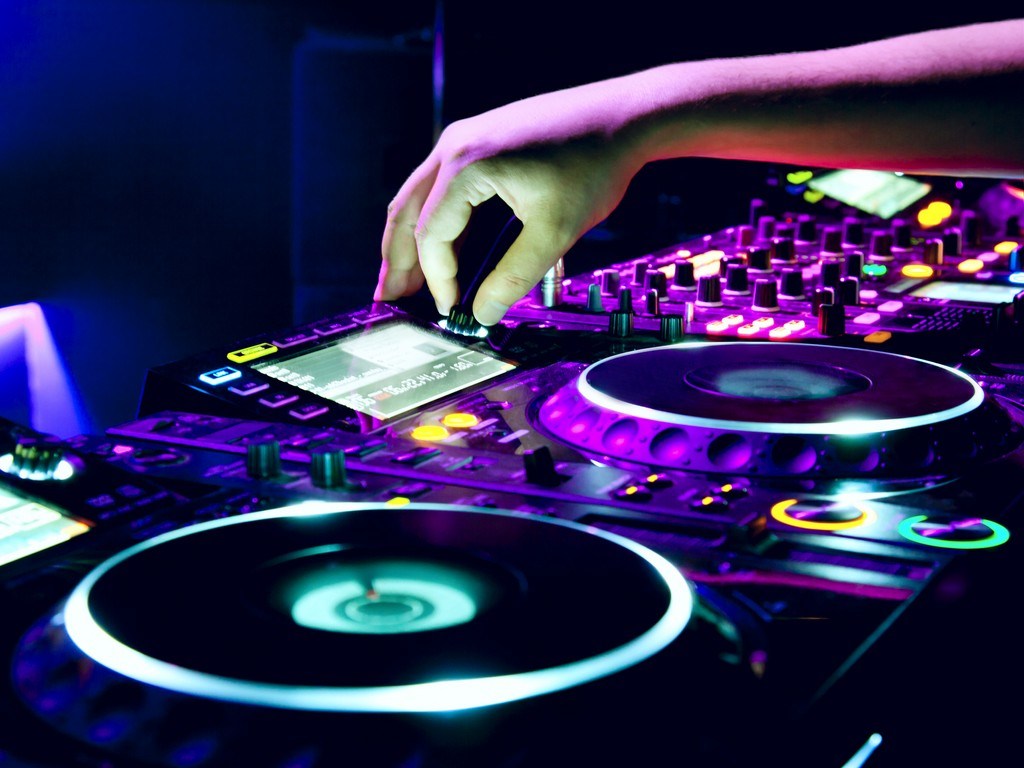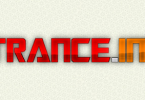Trance music is a form of dance music characterised by an emphasis on synthesized melodies and house style electronic 4/4 beats. Trance tracks are usually based around heavily quantized melodies, with a hypnotic and often repetitive feel (hence the name). Common sounds heard in trance are arpeggiated and gated synth riffs and sweeping pads, with the few real instruments limited usually to piano, strings and acoustic guitar, if used at all. Often large, amounts of delay and reverb are used, adding to the emotional, uplifting quality of the genre.
Early Days
The first forms of trance music emerged in the early 1990s as the dance revolution gripped the UK and mainland Europe. House music had already taken hold, and techno had also become popular in Europe by this time. Most of the dance music being produced at the start of the decade was sampler-based; sampling technology was relatively new at the time, and had become affordable enough for it to be mainstream. By the middle of the decade, however, dance pioneers were looking to take their sounds in a new direction; this led to the reappearance of the synthesizer which, despite being heavily used in the early 1980s new romantic and electro boom, had been rather overlooked since the sample-based dance music revolution of the mid to late 1980s.
Two particularly influential synthesizers did continue to play a part in early house music – Roland’s TB-303 Bassline and TR-909 drum machine. Misuse of the TB-303 formed the basis of acid house, originating in America and becoming popular in the UK between 1987 and 1990, while the TR-909 formed the basis of the vast majority of house music rhythms by the 1990s. While house eventually moved away from TR-909 based rhythms by incorporating sampled drum loops and breakbeats, trance music retained the TR-909 sounds which continued to be popular right through until the 2000s. Acid house featured many of the characteristics of trance, but was was a more minimal genre with a focus on the sound of a repeating, distorted TB-303 riff rather than the melody created by the TB-303 itself. This may have been partly due to the TB-303 only featuring a single octave keybord (although options to increase or decrease the octave range were available), which had to be programmed rather than played. By 1990, acid house had been superseded by more melodic forms of house and techno, with piano house becoming popular and stab-driven techno melodies starting to feature in early rave music.
Against this backdrop, some early tracks were released which proved influential in the future development of trance. Future Sound of London released Papua New Guinea in 1991 – essentially a breakbeat techno track but featuring uplifting atmospheric pad sounds rather than the rave stabs or piano riff samples common at the time. Hardfloor, a German techno group, released Hardtrance Acperience in 1992 – a piercing acid house cut but with a greater focus on melody than traditional acid house. This sound was taken even further on their 1994 tracks Into The Nature and Fish and Chips. Jam and Spoon, also from Germany, released Stella in 1992 and remixed Age Of Love the same year, which are widely regarded as the first trance tracks. In 1993, a track called Dreams was released by Quench, becoming an underground club hit which also received airplay on Pete Tong’s UK Radio 1 show during December 1993. This was a very early example of a trance track combining atmospheric pads, and the filtered saw-wave synthesizer riffs more commonplace by the end of the decade – indeed, Lost Tribe’s Gamemaster from 1998 features a riff based on Dreams. One giveaway that Dreams is an earlier production is that the cutoff filter sweep occurs quickly across the synth riff rather than gradually building up, as on later trance tracks. More typical of the proto-trance sound around at that time is the vocal mix of Celebrate by Miro; the filter sweeps are not yet present, but Celebrate does feature an infectious, repeated lead riff over gradually building synth pads and a bassline which changes key, techniques employed by trance producers in later years to create the trademark hypnotic feel of the genre.
While piano house, jungle and garage dominated British clubs in the mid-1990s, trance music continued to develop in continental Europe, particularly in Germany. Early trance featured many elements from European techno and commercial European rave music from the era, such as the Mark’Oh track Tears Don’t Lie (1995), began to take on the stuttering, gated synthesizer chords later associated with trance. Gradually, this sound diverged as a genre in its own right, and underground trance steered away from the toytown-style major key riffs while retaining its melody-driven feel. Italian producer Robert Miles released Children in 1995, featuring classical style piano and strings alongside the gated trance pads and helping to start a subgenre known as “dream house”. In the UK, meanwhile, some house and techno producers began to pick up on the trance sound and incorporated it into their tracks, for example JX with You Belong To Me (1995) – the No Respect remix being a good example of an early UK trance sound. This style became known as Nu-NRG and became faster and harder, taking on elements such as Roland Alpha Juno 2 “hoover” synthesizer noises and off-beat bass stabs, eventually morphing into UK hard house.
Psychedelic Trance and Goa Trance
GoaAt the same time as trance music was developing in Europe, the genre was also gathering a following in the Indian state of Goa, which had been a popular destination for psychedelic music since the 1970s. DJs in Goa had moved from playing psychedelic rock to playing electronic styles during the 1980s, and by found that early trance music fitted the hypnotic, hallucinogenic Goa scene perfectly. By 1994, Goa has developed its own style of trance which began to be exported to Europe and the UK, with artists such as Man With No Name being played by the likes of big name DJs including Paul Oakenfold, whose Goa Mix introduced Radio 1 listeners to the sound in December 1994. As trance became more commercial in Europe, Goa trance evolved into a darker, more progressive style which was to emerge as psychedelic or psy-trance by the mid-2000s. During the 2000s, melodic elements began to feature more heavily in the music once again, and psy-trance started to gather a significant following around the globe.
Commercial Trance
By 1996, trance music was becoming a major force on the European club circuit and also making an impression on the UK club scene. During the year, the Additive label was launched, bringing trance to a wider UK audience, including tracks such as Commander Tom’s Are Am Eye and X-Cabs Neuro. Chicane released Offshore in 1996, making haunting synthesizer pads a key feature of the genre. The same year, Dutch trance producer Ferry Corsten released his first single under the Moonman alias, Don’t Be Afraid. Corsten went on to have a considerable influence on trance music as it became a global phenomenon in the late 1990s, with his Moonman sound helping to refine the genre. His 1997 remix of Marc Et Claude’s La introduced a more prominent kick drum and saw-wave synthesizer chord stabs, later to become key elements of the main room trance sound popular around the turn of the millennium and adopted by pop-dance producers into the 2000s.
By 1998, the “supersaw” sound had started to become prominent following the release of the Roland JP-8000 analogue modelling synthesizer in 1996 which was designed to emulate the sound of more than one sawtooth oscillator using only a single oscillator. The Access Virus synthesizer was released in 1997, another virtual analogue synthesizer which later featured a similar “hypersaw” feature. Tracks such as Binary Finary’s 1998, remixed by rising trance stars Paul Van Dyk and Matt Darey, helped push trance into the limelight during that year, becoming the main genre staple of many club dancefloors. Cafe Del Mar by Energy 52 and Greece 2000 by Three Drives on a Vinyl, both released by Hooj Choons, became big Ibiza club tracks the same year featuring a mellower, progressive trance sound including lengthy build-ups.
During 1999 and 2000, many trance tunes which had started life as dancefloor fillers became UK top 40 chart hits. At the turn of the millennium, trance was at its commercial peak, with tracks such as Protect Your Mind by DJ Sakin and Friends reaching both the UK and German Top 5 singles chart in 1999, ATB’s 9pm (Till I Come) reaching UK number 1 the same year, and Aurora’s Ordinary World reaching the UK Top 5 in 2000. In this time, the sound continued to develop. Rank 1’s 1999 hit Airwave featured sizzling sustained supersaw pads rather than the usual arpeggios or gated synths, for example. Although trance began as very much an instrumental genre, by 2001 vocal trance had become very popular commercially. The Airscape remix of Delerium’s Silence, released originally in 1999, became a worldwide hit in 2000, reaching the top 10 in the UK, Australia, Canada, Ireland and the Netherlands. Madonna chose Above and Beyond’s trance remix for the video of her single What It Feels Like For A Girl in 2001, and the same year commercial trance artists such as Ian Van Dahl began to emerge producing a vocal-heavy sound.
Although trance remained popular both in clubs and commercially well into the first decade of the new millennium, the inevitable backlash was happening by 2002. By this stage most of the trance music featuring in the charts had become more commerical in nature and was not reflective of the music being played in underground trance clubs. Interestingly, rather than trance being superseded by another dance genre as had repeatedly occurred during the 1990s, a general backlash against dance music in general occurred between 2002 and around 2007, with a revival in fortunes of indie rock and guitar pop taking place and electronic music returning back underground. During this time, trance evolved into several distinct styles: hard trance, progressive trance and tech trance, and later had an influence on the electro house and EDM styles which would push dance music back into the mainstream once again.
Hard Trance
British hard trance developed during the period 2001 – 2003 through the fusion of hard house and trance music. By 2000, hard house had become a popular sound in the UK – at the time, most tracks featured rave and hoover samples. During late 2000 and 2001, some hard house DJs and labels started to push a trance influenced sound. At the same time some trance producers, sensing that trance was becoming more commercial, started to push a harder, more minimal sound. These came together and by 2003, hard trance had become one of the most exciting sounds on the dancefloor. Pioneers of hard trance include Guyver, Lee Haslam, Stimulant DJs, BK and Andy Farley with key labels being UK hard house veterans Tidy Trax and Nukleuz. Between 2002 and 2006, Tidy Trax released the Resonate mix album series which illustrates the development of this style over the period, fetauring heavy use of supersaw arpeggios along with prominent kick drums and hi-hats. By 2006, hard trance had become less prominent, with some hard house producers returning to a sound incorporating rave elements, while others had moved on to other genres such as tech-trance and progressive house.
Progressive Trance
The rise of progressive trance happened at a similar time to the development of hard trance and was probably again a reaction against commercial trance music. Progressive trance, however, slowed down rather than sped up the genre. Born from a combination of the fusion of deep house with basic trance elements, such as arpeggios, gated synths, delays and heavy reverb, progressive trance generally had more subtle melodies than its commercial variant, usually in a minor key. By 2000, the Slinky label was already pushing progressive trance in the UK, and arguably the Hooj Choons label had been pushing early variants of the genre before this having released material such as Tilt’s Dark Science E.P. By 2003 and 2004, progressive trance was starting to merge with deep house and breakbeat to form one a new underground dance music sound, evident in the music of DJs such as Hernan Cattaneo and Dave Seaman. Renaissance were one of the labels pushing this genre forward during the latter period of the decade and beyond, with their Masters series promoting progressive trance and house.
Tech-Trance
By 2006, the most widespread variant of trance was the growing genre of tech-trance, pioneered by the likes of producers such as Tiesto, Marco V and Marcel Woods. The defining features of tech-trance are complex, electronic rhythms, heavily quantised and usually driven by a loud kick drum, with filtered, dirty or slightly distorted hi-hat sounds and claps; harder synth sounds, usually with a large amount of resonance or delay; minimal pads, often with sidechaining to increase the volume off the beat. While earlier variants of trance music often featured piano, strings or acoustic guitar, tech trance almost exclusively featured synthesized sounds. Tech-trance producers were some of the first to bring prominent sidechaining to their productions, with sidechained pads being introduced from around 2004 onwards, and by 2010 many tracks were featuring sidechaining on most of their parts. Tech-trance has also pushed the boundaries in other ways, for example Marcel Woods’ remix of Ferry Corsten’s Whatever in 2006 featured subtle changes in pitch throughout the track, similar to slightly slowing down a tape reel, while keeping a constant tempo. Creative use of reverb has also been a feature pioneered by the genre, for example introducing a big reverb on a snare sound which then suddenly disappears the next time the snare is played, only to return shortly afterwards. Above and Beyond, meanwhile, introduced a resonant analogue-sounding bassline on Buzz, released in 2007, highlighting the move away from the simple, off-beat basslines that had been the trademark of trance between 1997 and 2004, and signalling the introduction of tech-trance elements into more melodic variants of the genre.
Electro House, Swedish House and EDM
Developing at a similar time to tech-trance, electro house was the buzzword of the mid to late 2000s dance community, developing underground while dance music was less popular commercially. Combining elements from a wide variety of genres, including trance and progressive house, electro house slowed down the tempo from around 135bpm to 140bpm in the trance of 1999 – 2000, to between 125pm and 133bpm. Electro house simplified the rhythms and pumped up the compression and volume. During the same period, production became more crisp as many DJs moved from vinyl to digital, allowing for better high frequency response. Key differences between the music of 2000 and the music of the 2010s are enchanced treble content, partly due to the introduction of aural exciter and enchancer software plug-ins such as BBE’s Sonic Maximizer which eliminated the need for expensive hardware units, greater compression and hard limiting leading to louder overall volume, prominent use of sidechaining which by 2012 was even being employed in pop and rock tracks, and simpler, cleaner productions with a move away from overlaying multiple drum loops.
Electro house took some of the supersaw sounds from trance, especially in later productions, while trance music (particularly tech-trance) took elements from electro house. The logical development of this merger was “Swedish house”, a genre coined from Swedish House Mafia’s productions such as One from 2010, featuring trance-style supersaw stabs recurring at 2/3 of the interval of the beat over a simple, electro-house beat and simple bassline. During the period 2009 – 2011, electro house and Swedish house sounds exploded into the mainstream, being picked up by US hip-hop artists such as Black Eyed Peas and pop artists such as Rihanna. Between 2011 and 2013, the sound developed a harder edge, with the introduction of on-beat claps (similar to the UK hardcore of 1996 – 97) and ride cymbals, and pitchbending whole segments of the track, either during a long build-up or as a sudden effect. By the end of 2012, the term EDM (electronic dance music) was being commonly used for the genre.
Trance music has enjoyed a resurgence in recent years alongside the boom in EDM and renewed interest in dance music. Between 2008 and 2013, the disparate genres spawned from trance started to merge again as producers who had stuck with the original trance sound took on elements from tech-trance and electro house. By 2013, on-beat claps, sidechaining, Swedish house style stabs and pitchbending were being employed by producers such as Arty, Omnia and W&W – the latter still demonstrating the popularity of tech-trance sounds on tracks such as Shotgun. Creative sidechaining techniques were also commonplace, such as those used on Arty and Mat Zo’s Mozart in 2012 which duck the sound to enhance the supersaw chord riffs rather than just on the off-beat. Some producers have adopted subtle elements of EDM, and retained the more hypnotic elements of trance such as Gareth Emery.
Generally by 2010 the 1/16th beat arpeggios common in 2000 had been dropped by contemporary producers, however an interesting development in the period 2010 – 2013 is a revival in the classic trance style of supersaw arpeggios with less obvious sidechaining, accompanied by uplifting strings and pads. Producers such as Arctic Moon have helped to promote this style, evident on their remix of Dash Berlin’s Till The Sky Falls Down. The rise in popularity of this style may be a reaction among some producers and trance fans against the commercial variant of EDM; by 2013 a backlash against EDM by some in the dance community was evident (source: Mixmag).
Written by John M.





